It is not every day that you come across one of the largest moths in North America. It happens to us perhaps once or twice a year. This year it was time for us to meet the caterpillar of the Polyphemus moth!
We were on one of our riverside walks when I noticed a very large caterpillar crossing the path. We picked it up with a couple of leaves and moved it to a nearby maple, so it wouldn’t get squished by bikers. We used leaves so as not to touch it, as some caterpillars have stinging hairs.
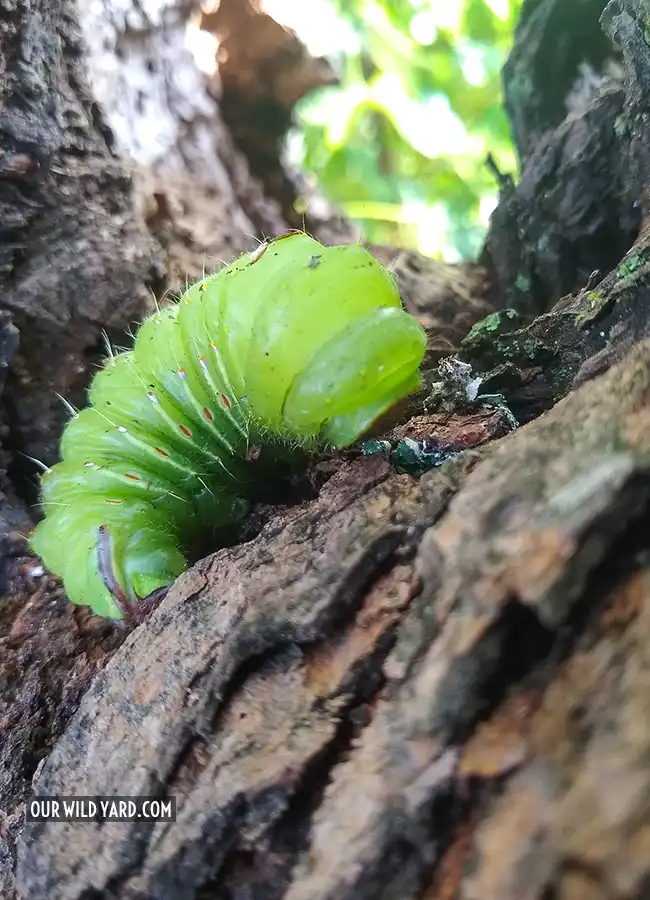
We took a couple of photos and left it there. We checked on it 20 minutes later and it was walking up the trunk of the maple. It seemed like it was already on its 5th instar and it was probably looking for the right place to pupate.
*This article may contain affiliate links. We receive a small commission at no extra cost to you.*
When we got home we took out our Caterpillars of Eastern North America guide and discovered it was the caterpillar of a Polyphemus moth (Antheraea polyphemus). We found this moth a few years ago at our house but we had never seen the caterpillar until today. By the way, if you don’t have that field guide, we recommend it as a handy little addition to your naturalist library.
Polyphemus moth (Antheraea polyphemus)
- Wingspan: is 10 to 15 cm (approximately 4 to 6 inches)
- Distribution: south Canada, Mexico, and the United States except Arizona, Nevada, Alaska, or Hawaii.
- Host plants: oak, alder, birch, chestnut, elm, maple, poplar, hickory, rose, willow, and basswood.
The Polyphemus is a giant silkworm moth
The Polyphemus is a member of the Saturniidae, the giant silkworm moths. Giant sillk moths are famous for their use of silk to spin their cocoons.
It is named after Polyphemus, the Cyclops (one-eyed giant) from Greek mythology, son of Poseidon, god of the sea. It was given its name because of the large eyespots in the middle of the hind wings.
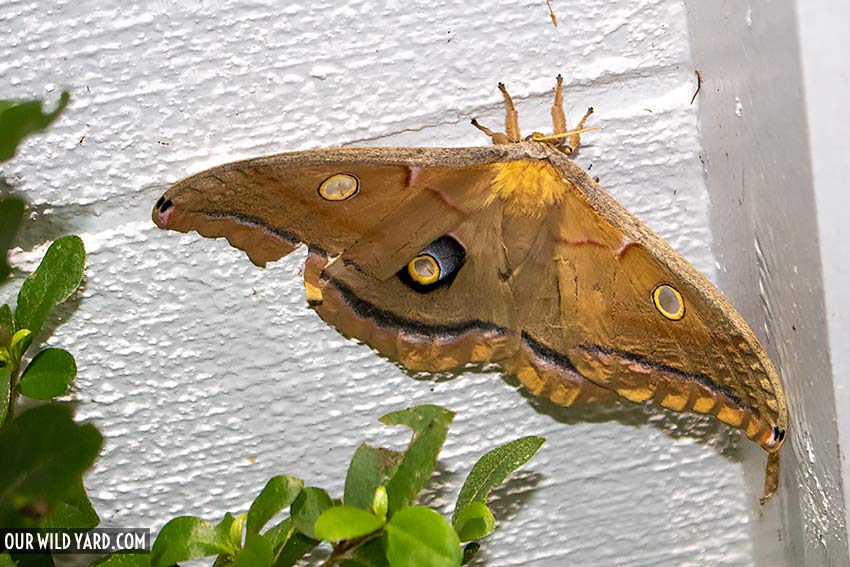
These eyespots are transparent. The forewing eyespots are outlined with yellow and black. The eyespots on the hind wings are larger and outlined with yellow, black, and blue. The coloration of their wings varies and ranges from brownish yellow to ochre to tan colored.
Another identifiable feature is their pink, white, and black irregular lines parallel to the outer border of their wings.
Polyphemus range
Found in forests and woodlands, the Polyphemus moth is widely distributed in North America.
They are found in south Canada, Mexico, and the United States except Arizona, Nevada, Alaska, or Hawaii.
Polyphemus moth life cycle
The life cycle of a Polyphemus moth starts as little, light brown eggs on the leaves of their host trees. These eggs are easily recognizable as they are slightly flattened and look like brown Oreo cookies.
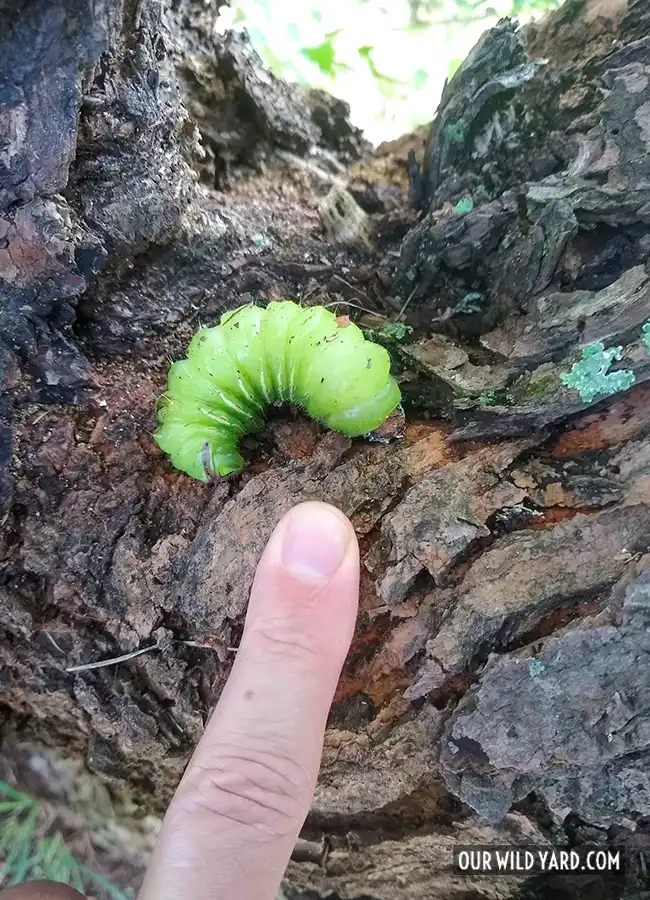
When the eggs hatch, the tiny caterpillars are yellow. They keep this coloration until the 5th instar when they are bright green (almost fluorescent) with little spots on the side. These spots are red and silver, each of which has two to five hair-like structures (setae). Their heads are brown.
Caterpillars can measure up to 7.5 cm (2.9 inches)
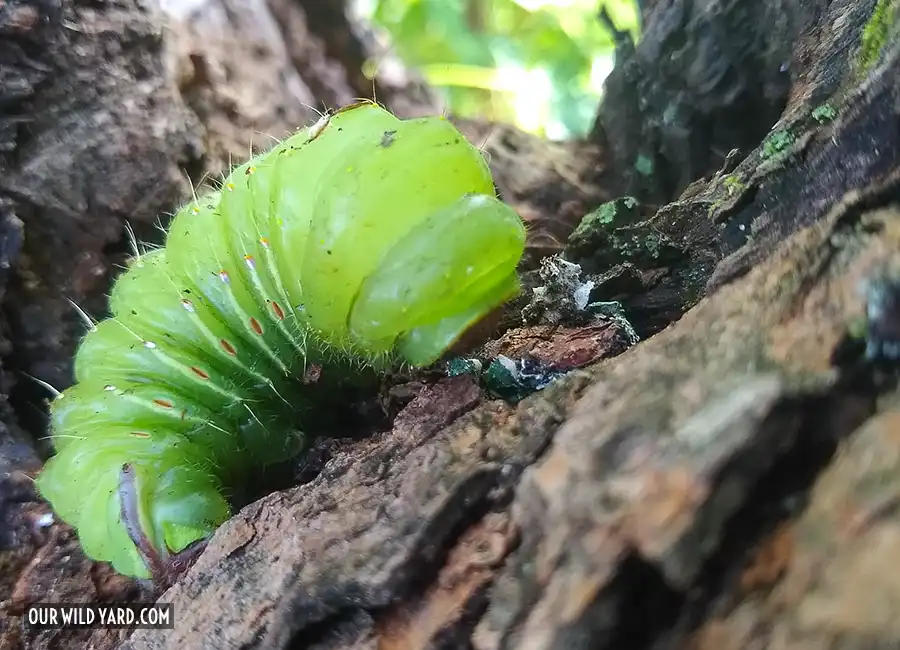
Many Polyphemus moth caterpillars will pupate in the leaf litter. They spin their cocoon out of silk (hence their name ‘giant silk moth’) on a leaf in a tree and will drop to the ground in autumn when the leaves fall. (Yet another reason to leave the leaves on the ground!) Some caterpillars will use enough silk that the cocoon will remain attached to the tree through the winter.
Some of the cocoons will be predated upon by birds and rodents in winter and not all moths will survive to emerge from the cocoon (called “eclosion”).
After emerging, adult moths spend their short lifespan of 7 to 15 days looking for mates. Their mouthparts are vestigial (atrophied) and they don’t eat at all.
The Polyphemus moth wingspan is 10 to 15 cm (approximately 4 to 6 inches).
There are two generations of moths in the South and one in the North. I’ve read that in Missouri there are three generations a year.
Our sightings of Polyphemus have always been in August, in NC.
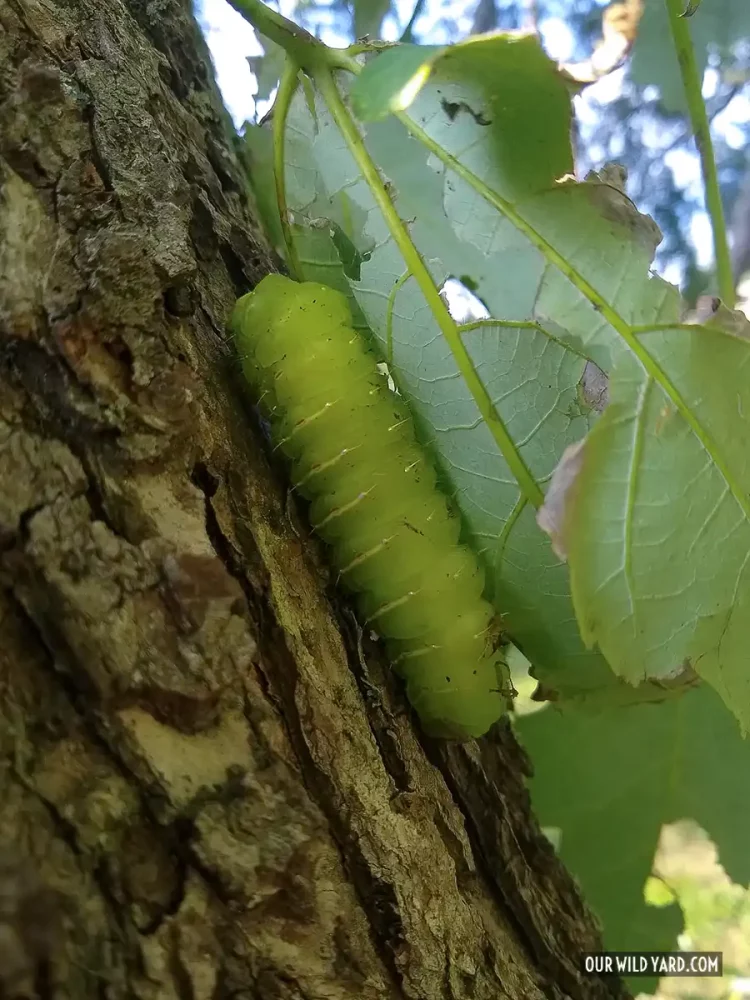
Polyphemus host plants
Polyphemus caterpillars feed on a variety of leaves. These include oak, alder, birch, chestnut, elm, maple, poplar, hickory, rose, willow, and basswood.
Adult Polyphemus don’t eat.
Polyphemus moth male vs. female
So, you found a Polyphemus moth and don’t know whether it is a male or female? An easy way to tell giant silkworm moths apart is by looking at their antennae.
Male giant silkworm moths have wider antennae than females. For example in the photo below of two cecropia moths mating, the male is on the left. You can tell by how wide his antennae are.
Males have a feathery antennae which is used to detect female pheromones. Males can fly long distances in search of a female. These photos of a male and female cecropia moth will give you an idea of what to look for. The antennae of the female (on the right) are barely visible in this photo as they are much thinner.
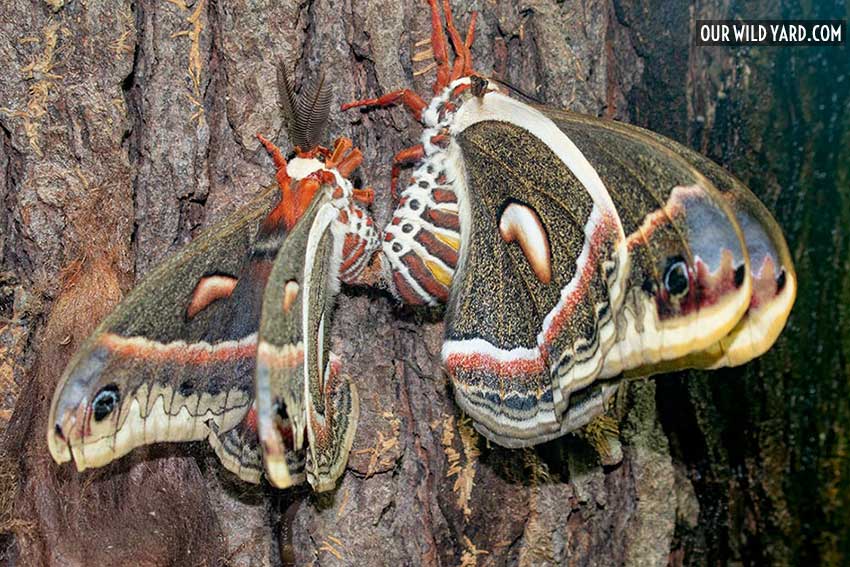
I’ve seen photos of male and female Polyphemus and it seems like females have a bigger eyespot.
Are Polyphemus moth dangerous?
Polyphemus moths are not dangerous and they don’t sting. But it’s better not to handle them. They have such a short time to find a mate; why not leave them alone and not waste their energy?
The caterpillars don’t sting, but if you must handle them to move them out of harm’s way, please do so with care.
As always, we recommend you take a photo, admire their beauty, keep them away from harm, and leave them be.

So happy to hear about your Blog. I am a passionate gardener but also love all the little wild things I find in my garden on a daily basis. Recently, I found a huge Orb Spider in my geraniums. It was so interesting reading about them.
So happy to hear about your Blog. Can this insect be eaten? Is there a reference?
We stay in Wilson NC and found a big g caterpillar in the local park.